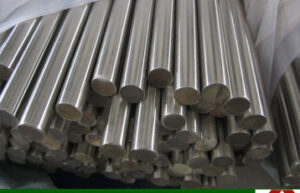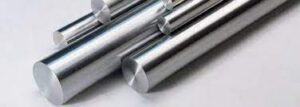Introduction
Stainless steel, celebrated for its versatility and resilience, owes its mechanical prowess to a delicate interplay of elements. Among the diverse range of stainless steel grades, 410 stainless steel emerges as a distinguished contender, known for its unique blend of attributes. At the heart of its mechanical strength lies the carbon content—a key factor that orchestrates a symphony of transformation. In this comprehensive exploration, we delve deep into the intricate relationship between carbon content and the exceptional strength of 410 stainless steel.
Deciphering the Strength of Stainless Steel
 Strength is a foundational property that shapes the utility of materials across industries. Stainless steel, with its diverse array of grades, owes its strength to various factors, including alloy composition, microstructure, and heat treatment. 410 stainless steel, a member of the martensitic family, stands as a testament to the role of carbon content in influencing its remarkable strength.
Strength is a foundational property that shapes the utility of materials across industries. Stainless steel, with its diverse array of grades, owes its strength to various factors, including alloy composition, microstructure, and heat treatment. 410 stainless steel, a member of the martensitic family, stands as a testament to the role of carbon content in influencing its remarkable strength.
The Marvel of Martensitic Stainless Steel
410 stainless steel belongs to the martensitic stainless steel family—a category celebrated for its ability to be hardened through heat treatment. This martensitic microstructure, characterized by a latticework of crystalline structures, contributes to the alloy’s enhanced mechanical properties.
Carbon: The Architect of Mechanical Attributes
Carbon, an elemental cornerstone, plays a pivotal role in shaping the mechanical attributes of stainless steel. In the case of 410 stainless steel, carbon content influences its hardness, tensile strength, and wear resistance. The presence of carbon promotes the formation of martensite during heat treatment, driving the material’s transformation from austenite to its hardened state.
Carbon’s Influence on Martensitic Transformation
The phase transformation from austenite to martensite during heat treatment is the crux of 410 stainless steel’s enhanced strength. The carbon content impacts the critical temperature at which this transformation occurs. Higher carbon content reduces the critical temperature, allowing for a more rapid transformation and yielding greater hardness and strength.
Strengthening Mechanisms: Solid Solution and Precipitation Hardening
The presence of carbon not only contributes to the formation of martensite but also interacts with other alloying elements to enhance strength. Solid solution strengthening occurs when carbon atoms occupy spaces within the crystal lattice, hindering dislocation movement. Additionally, carbon can participate in precipitation hardening, where it forms carbides that contribute to strengthening the material.
Optimizing Carbon Content for Desired Strength
 The carbon content’s impact on strength is a delicate balance. Too low a carbon content might hinder the formation of desired phases, while excessive carbon content can lead to brittleness and potential difficulties during processing. Engineers carefully calibrate the carbon content to achieve the desired combination of strength, hardness, and ductility.
The carbon content’s impact on strength is a delicate balance. Too low a carbon content might hinder the formation of desired phases, while excessive carbon content can lead to brittleness and potential difficulties during processing. Engineers carefully calibrate the carbon content to achieve the desired combination of strength, hardness, and ductility.
Comparative Analysis: Carbon Content and Other Stainless Steel Grades
When compared to austenitic stainless steel grades like 304 and 316, 410 stainless steel demonstrates higher strength due to its martensitic microstructure and higher carbon content. This enhanced strength comes at the expense of some corrosion resistance, highlighting the trade-offs involved in material selection.
Applications Showcasing the Strength of 410 Stainless Steel
The strength of 410 stainless steel finds applications across industries:
- Cutlery and Kitchenware: The hardness and strength make it ideal for knife blades and utensils.
- Industrial Components: Pump shafts, valve parts, and fasteners benefit from its enhanced mechanical properties.
- Aerospace Engineering: Structural components rely on the alloy’s strength and resistance to wear.
- Automotive Parts: Exhaust systems and fasteners endure high temperatures and mechanical stress.
- Medical Instruments: Surgical tools require strength and durability, qualities offered by 410 stainless steel.
Debunking Myths and Queries: FAQs About Carbon Content and Strength
Q1: Does higher carbon content always mean higher strength?
While carbon content impacts strength, other factors like alloying elements, microstructure, and heat treatment also play significant roles.
Q2: Does higher carbon content make stainless steel more brittle?
Excessive carbon content can indeed lead to brittleness, necessitating a balance between strength and ductility.
Q3: Can lower carbon content achieve similar strength?
Lower carbon content might yield lower strength in martensitic stainless steel due to its influence on phase transformation.
Conclusion
The carbon content’s influence on the strength of 410 stainless steel exemplifies the intricate dance between composition, microstructure, and mechanical properties. In this alloy, carbon serves as both an architect and an engineer, shaping the material’s response to heat treatment and heat-induced transformations. The multifaceted nature of carbon’s impact underscores the significance of
